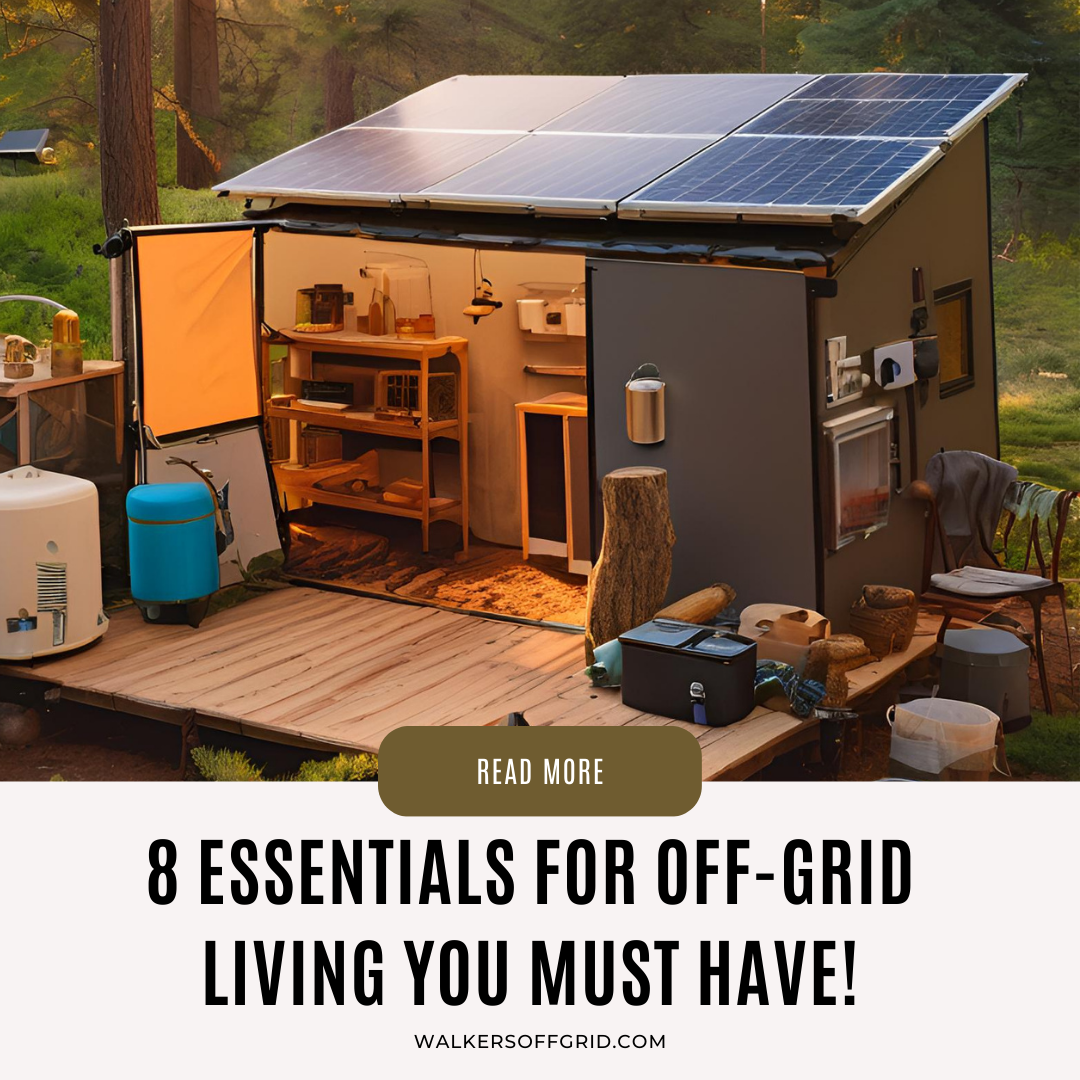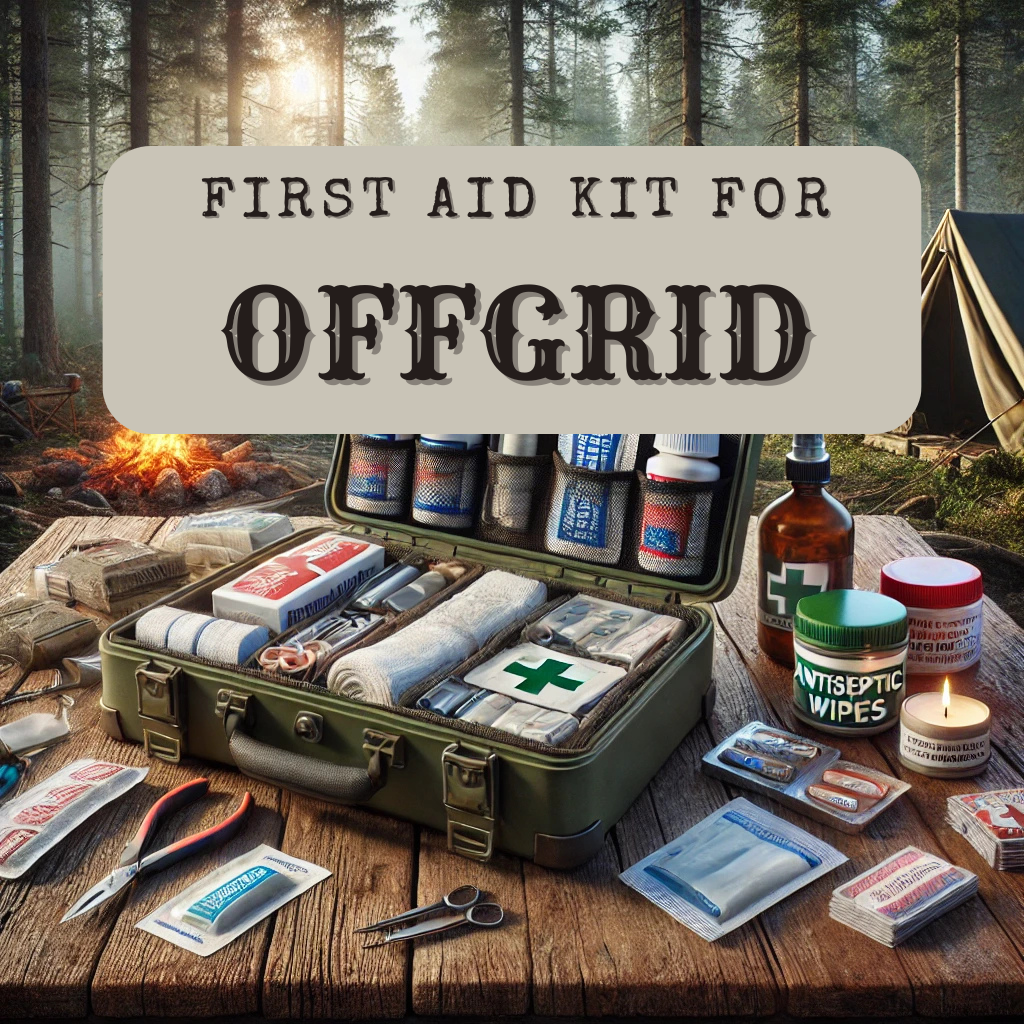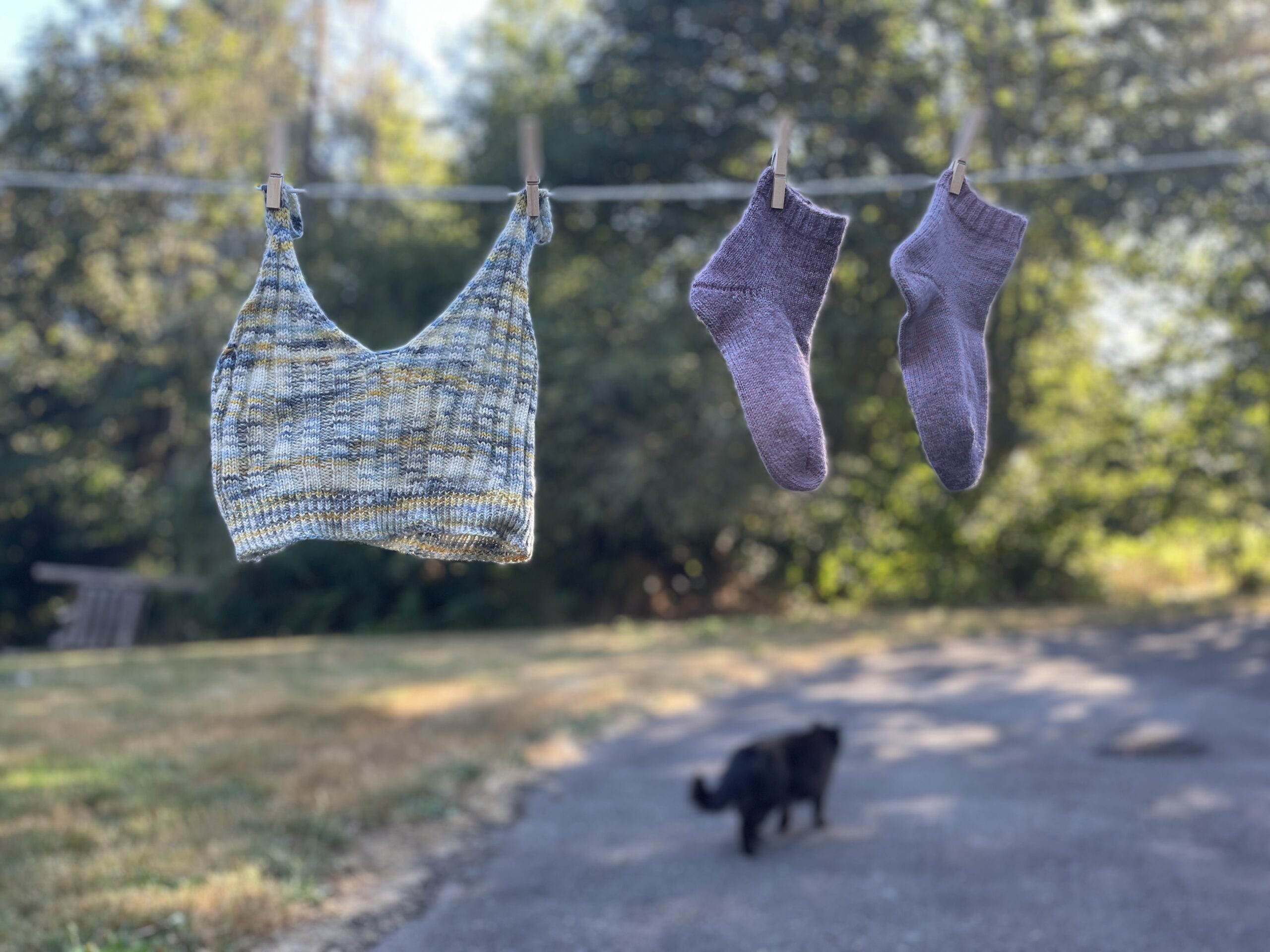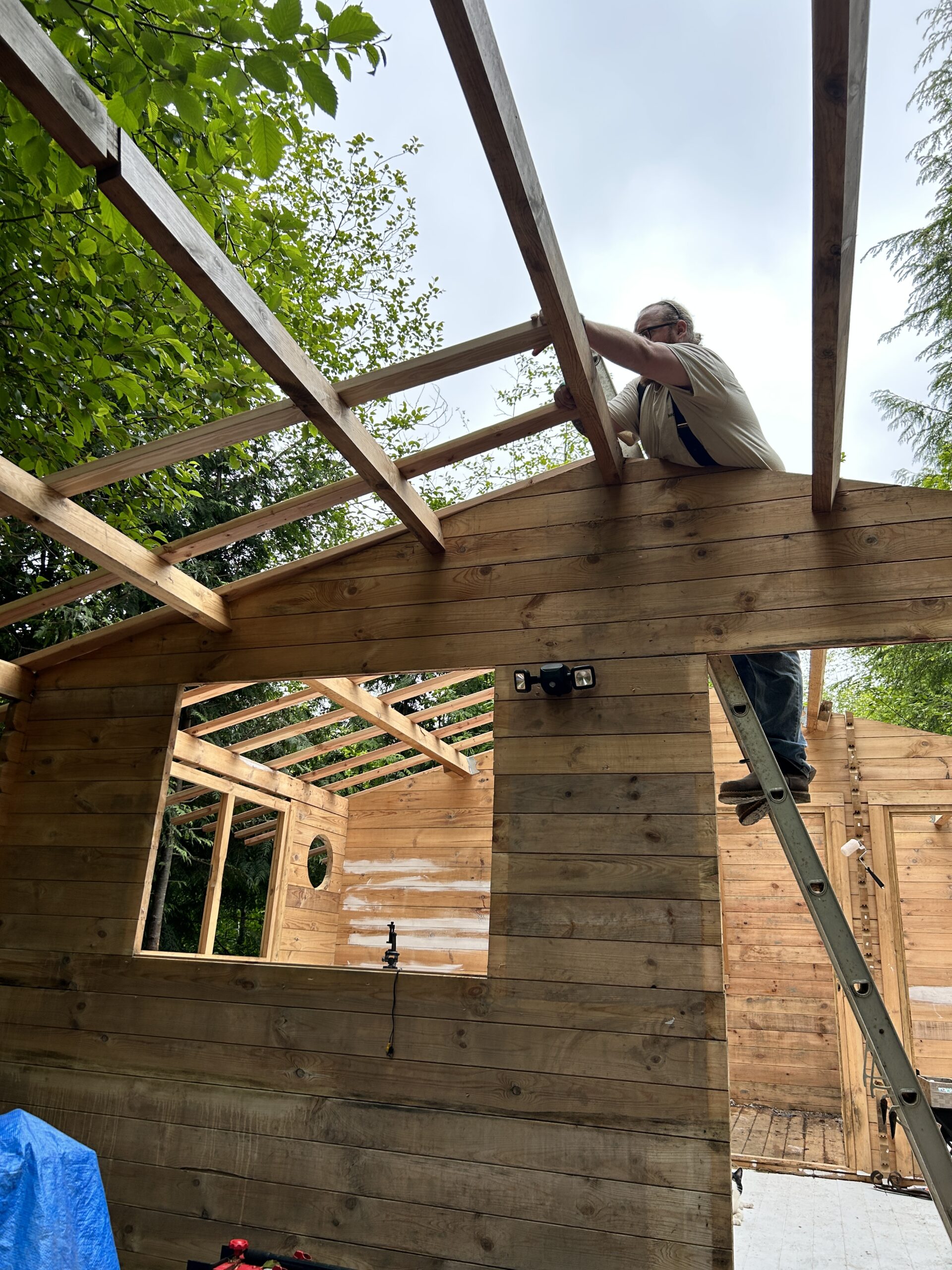1. Propane or Wood Stove
Cooking is essential, and a reliable off-grid stove is key to eating healthy and feeling your best. Propane stoves are easy to control and efficient, while wood stoves double as a heat source for your home. Choose the one that aligns with your needs and fuel availability.
We custom built our kitchen into the available space we had in our cabin and implemented a propane rv stove and oven combo unit like this one from Amazon. It was straightforward to set up and while it is smaller than a conventional residential range, it fits small spaces. I have used this oven to bake homemade breads, pizza, cakes, and roasts. Following manufacturer’s instructions, we connected a 40 lb propane tank to it and still haven’t needed to refill the tank after an entire year of daily use!
The only thing this oven may be too small for is baking turkeys, but a family trade secret is to cut the turkey up into similar sizes before baking to get a more evenly cooked and juicy turkey anyway.
We looked at cook stoves as an option but it would make the cabin unbearable hot in the warmer months. Although a wood stove is an option for cooking, it takes a lot longer from my experience! I can cook a pot of rice or bring a pot to a boil on the propane stove in 10 minutes, but it will take around an hour to do it on a wood stove, and longer if you’re starting with a cold stove. I prefer to use the wood stove to warm up the tea kettle for later!

2. Cast Iron Cookware
Durable and versatile, cast iron cookware works well on any heat source, including open flames and wood stoves. It’s long-lasting and excellent for everything from frying to baking. A good cast iron will last literal generations and can be passed down to your kids and grandkids without creating waste like the Teflon-coated cookware. We have a couple of cast irons pans that belonged to Tyler’s grandma and one day they will be passed down to Maverick.
If you didn’t know, Teflon-coated cookware has been linked to leach PFAS (forever chemicals) into your food and these PFAS have been found to infiltrate the blood-brain barrier and is known as a carcinogen and to cause fertility problems. Generally Teflon cookware is safe until you scratch the surface, which we’ve all done on accident by using metal utensils. Oops!
Cast iron can be tricky to learn to use when you’re a beginner, but just remember to never leave moisture in it for extended periods because it will rust. But the bright side is that you can clean the rust off and re-season and it’ll be good to go once again. No need to ever throw it away! And have you ever had a homemade pizza baked in a cast iron pan? It makes the most delicious pan pizza with the bubbly underside, just like Pizza Hut’s pan pizza.
We have this set! And even after a couple of them got rusty, Tyler was able to restore them to good as new!

3. Solar-Powered Battery Bank
We live off the grid, not off this planet! And that means we still need electricity to charge our phones, light the cabin up at night, run the fridge and deep freezer, and to charge our rechargeables! That’s why we rely on the Ecoflow Delta Pro. We’ve had this beast since the very first day of being at our property and it has been the most reliable of any of our tools and gear. It came with a 400w foldable solar panel but it’s expandable up to 1600w of input. We currently have three 400 watt panels from a different brand connected to it and it generates 1200w when the sun is shining. It fully charges to 100% before 11am in the summer.
The EcoFlow Delta Pro can also have it’s battery expanded too to store more power! We have everything plugged into it and it powers everything reliably and without fail. We’ve gone out of town for up to a week at a time and it just does its thing powering our fridge and deep freezer.

4. Food Storage Solutions
Store bulk foods in airtight containers to keep pests out and extend shelf life. Glass jars, mylar bags with oxygen absorbers, and vacuum-sealed bags are excellent options for an off-grid kitchen. We have learned the hard way how quickly food can get stale or how easily it is for a mouse to get into your food supply! With how humid it is where we live in the PNW, chips, crackers, popcorn, and cereal can go stale over night and that’s why it is important to make sure you protect your food to avoid waste. We personally use the LEM MaxVac 100 vacuum sealer and the bags are also reusable, as stated by the manufacturer. Tyler won ours at an archery club giveaway last year but you can get one on Amazon here (it’s currently on sale for $81). We use our vacuum sealer to seal and freeze garden harvests, wild berries, fish, clams, and mushrooms!
I also recommend putting your dry foods (flour, sugar, rice, and beans) in glass jars or other glass containers. Without a HVAC or central air in our cabin, condensation happens and things just get moist. So if you don’t want clumpy sugar or moldy flour, get them in an airtight glass container ASAP.

5. Potable(Drinkable) Water
Clean water is vital for cooking and cleaning and this really should be #1. A gravity-fed water filter system or a hand-pump setup ensures you always have access to water without electricity. Water is life and without it, you won’t have water to drink, to cook with, wash dishes, and wash your hands and body. Our current water set up is very basic and easy to implement. We have our gutter coming off of our metal roof, directly into a 55 gallon water barrel.
I use a manual hand pump (Amazon) and pump water out of the water barrel into a big pot or a 5 gallon bucket and bring it inside to boil. I boil 2 gallons a day for our family of 3 for drinking and cooking and then once the water cools, I pour it through a Brita pitcher with a charcoal filter to filter out any debri. The water comes out absolutely clean and so tasty! You’ll never be able to drink city water from the tap ever again! It tastes like bleach!
It is a struggle to find a 55 gallon barrel that is rated for potable water because most of them are for made for non-food use or only for storing dry food. Here’s the barrel we have and it is safe for storing drinking water and is BPA-free.

6. Shower
Good hygiene is serious when it comes to off-grid living because you can easily get sick or develop an infection. It isn’t uncommon to get cellulitis from scratching a mosquito bite with dirty hands! If you want to avoid a visit to the doctor’s office, I can’t talk enough about having good hygiene! We are lucky to have been able to use state parks in our area to shower for free, but it’s still a decent drive to one. A quick way to set up an easy shower is to get a pop-up shower tent and one of these cool, rechargeable pumps! If you have a solar system on your property, anything rechargeable is practically solar-powered! This is decent way to get a ready to use shower relatively cheaply and quickly, but I definitely don’t recommend this to be your permanent solution.
This shower doesn’t heat the water up, so you’ll need to heat up some water on a stove or fire. It’s just a pump but also tells you the temperature of the water and how much battery life is left.

There are other shower solutions such as the camp shower, which you fill up with water and leave it out in the sunshine to warm the water up, but you’ll need some kind of tent or shelter (unless it’s summer and you’re alone). You can also get a propane tankless water heater, but these require a pump. You can rig a DC pump up to a little battery.
7. Refridgeration
When we first came out to our property it was February and the temperature was that of the inside of a standard refrigerator so keeping our food cold wasn’t an issue until it started warming up. At this point, we got by for a month or two using an ice chest and getting ice from the corner store twice a week but the cost of ice was adding up at $3.99 a bag. We decided it was time to get a mini-fridge and was able to pick up a pre-owned one for $30. It served us well enough and didn’t have a high energy usage but the only downside was the freezer was TINY.
After 6 months of using the mini-fridge while we lived in our walled tent, our cabin was finally ready for move-in and we commemorated the date with a bigger fridge. We landed on a Frigidaire fridge and I believe it is 7.5 cu ft. It’s larger than a mini-fridge, but not quite full size. It does have a split freezer and fridge section, which is a plus! The one we have is similar to this one on Amazon.
8. Bathroom Needs
This one also should be higher up along with potable water, but hey, this was the way the cookie crumbled. Everyone poops and pees, and poop can be a problem if it isn’t done right. There are a ton of different ways you can approach this but it comes down to what is allowable in your county and what you are willing to deal with. Everyone likes to throw the idea of composting toilets out first, but when it gets full you have to empty that sucker out. And where? It takes awhile to actually turn into compost.
Biodegradable poop bags are an option, as they’re good for the environment and you can just bury them in the ground to compost at their own pace. The bags are 7 gallons to fit a 5 gallon bucket and are easily manageable on their own. As long as you don’t put anything non-compostable in the bags, feel free to bury them (as long as it’s allowable by your county and you don’t have dogs that like to dig up and eat poop).
Another option is to dig a big hole and build a box over it to serve as the toilet seat. On top of the box, you cut out a hole and attach a toilet seat on top. Make sure you place your outhouse at least 100 feet away and down stream of any fresh water sources you’re using or planning on using. For safety and sanitation.
I hope this list helps with any decision making for your future or current off-grid home. When Tyler first brought up off-grid lifestyle to me, I was terrified about how we would solve these issues and so I hope I could help if you’re worried about finding solutions for these problems. If you have any questions about anything off-grid living, please feel free to ask me by leaving a comment and I’ll try my best to answer them.





